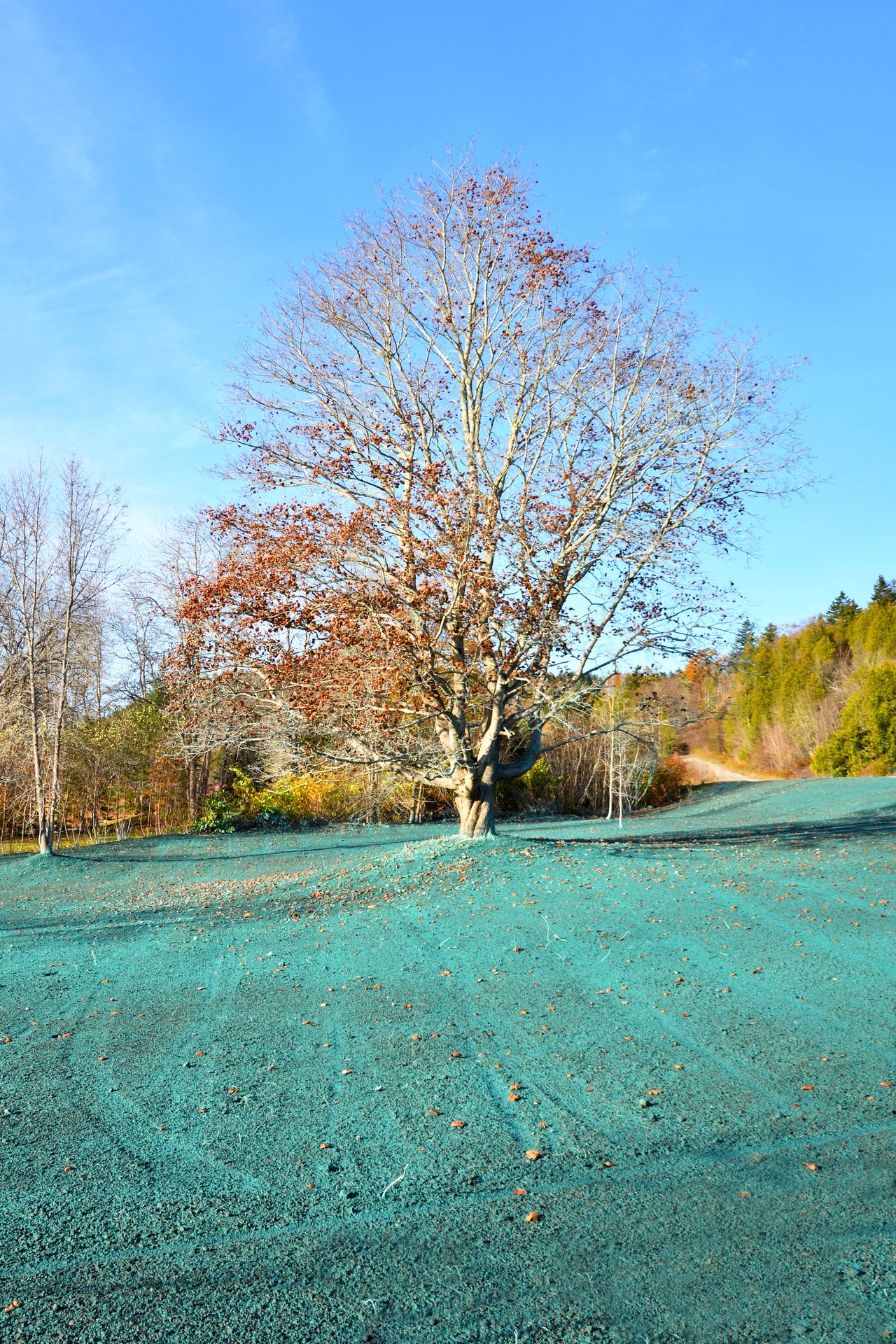As science and agriculture evolved, manufacturers have created new ways to sod and reseed fields with yields that grow in a matter of days.
Hydroseeding is not only a fast and easy hack to reseed entire fields with very little labor, but the chemical components of the hydroseeding slurry allow it to establish deeper and healthier roots.
While hydroseeding has long been used for many commercial applications, it has also become very popular among residents and housing communities.
This guide will explain the basics of how hydroseeding works and provide eleven concrete benefits of hydroseeding over traditional sod and hand seeding.
What Is Hydroseeding?
Hydroseeding uses a slurry of organic compounds designed to promote seed growth that is sprayed onto an open surface using a specialized machine. The machine consists of a pump and an application nozzle that is usually applied in one application.
The slurry consists of a mix of different ingredients, most commonly including:
- Seeds: Varies by environment and application.
- Water: Helps the seeds spread and keeps them hydrated.
- Phosphorous: Promotes cell division, which accelerates seed growth.
- Soil Amendments: Consists of compost, manure, lime, and other additives that regulate pH.
- Mulch: Fibers protect seeds and retain moisture.
- Tackifiers: Allow seeds to stick to uneven surfaces.
After being applied, the organic compounds work together to protect the seeds and promote fast and vigorous growth.
We’ve listed eleven benefits that help explain why hydroseeding is so effective and popular.
11 Benefits of Hydroseeding
1. Superior Lawn Yields
Pure and simple, hydroseeding provides superior results over traditional sodding and hand seeding.
Hydroseeding not only germinate quicker, but they are also more resistant to erosion and retain 10x more water than traditional sod.
Thanks to the mulch fibers which break down over time, the seeds not only retain more moisture, but they also get additional fertilizer from the mulch.
Another reason why hydroseeding works better is because it’s applied directly to the site. This avoids the need for transplanting seeds, which can result in shock.
Keep in mind that slurries are specially designed to regulate pH and block out weeds as well, making for the perfect environment to grow seeds effectively.
2. Cost-Effective
According to one estimate, the cost of hydroseeding is 50% to 80% less than the materials and labor required to lay down sod. Slurries can be made with cheap ingredients and only require a specialized machine to apply, making for less labor.
3. Less Labor Involved
Speaking of labor, another reason to choose hydroseeding over sod is that hydroseeding does not require any prep work to apply. While sod requires raking, hydroseeding can be applied casually to flat surfaces and even slopes, while the tackifiers do all the work of adhering to the surface.
Laying down sod is also laborious, so any company you hire will charge you extra for the manual labor to apply sod.
4. Uniform Coverage
Not only is the labor to lay down sod or hand seed more meticulous, it’s also less reliable. One of the best advantages of hydroseeding is that its application is uniform wherever it’s applied. Thanks to the specialized machine and pump, seeds can be applied in a flat pattern without overcrowding all the way across large stretches of fields.
5. Reaches Difficult Terrains
Hydroseeding can also be applied to difficult terrains, such as slopes and hills, that traditional sod may struggle to adhere to. Thanks to the tackifiers inside the slurry, you can apply hydroseeding to the steepest hills without worry of erosion or displacement from the wind.
6. Natural Erosion Control
Due to the mulch fibers found in the hydroseeding slurry, you can rest assured that your seeds will be protected from air and water erosion. This is particularly useful for construction companies or land developers who need to protect impacted fields from erosion that can lead to sedimentation.
When compared to other stormwater BMPs, hydroseeding requires less labor than erosion control matting and can provide permanent stabilization of the area–not just temporary protection.
7. Fast-Acting
Another reason hydroseeding works better than sod and is great for erosion control? It works extremely fast. How fast? In most cases, seeds will sprout in under seven days and reach three inches within a month.
8. Multiple Industry Uses
As we implied in the intro, hydroseeding can be used for multiple applications, whether it’s commercial or residential hydroseeding.
Some common uses of hydroseeding include:
- Golf courses and sports fields
- Construction sites
- Erosion control services
- Agriculture
- Land development
- Energy extraction
- Parks and protected areas
9. Multiple Seed Uses
Hydroseeding is not just for reseeding lawns and grass; hydroseeding can also be used for restoring native vegetation, such as wildflowers, prairie grass, and other forms of ground cover.
10. Fewer Weeds
On average, hydroseeding slurries contain fewer weed seeds than other methods, meaning your lawn will have fewer weeds to fight back.
11. Environmentally Safe and Friendly
Finally, hydroseeding is a 100% safe and effective formula designed to promote plant growth using already recycled materials, such as mulch fibers, fertilizers, and soil amendments. Plus, its natural erosion defense makes it a great option for restoring natural vegetation in disturbed areas that helps protect the local ecosystem.
FAQs: Benefits of Hydroseeding
What are the disadvantages of Hydroseeding?
Like other traditional methods, hydroseeding does require constant watering and should only be applied when the weather permits. Otherwise, hydroseeding provides no greater disadvantage than sod or hand sowing.
Will rain wash away hydroseeding?
Hydroseeding is formulated with a specialty tackifier coagulant designed to adhere to surfaces and resist washouts. In most cases, hydroseeding will resist heavy rains, though severe rains could present some complications.
What is the best time of year to hydroseed?
Like most lawn seeds, fall and spring present the best weather to plant new seeds as the ground will provide moderate temperatures for growth and require less water.

